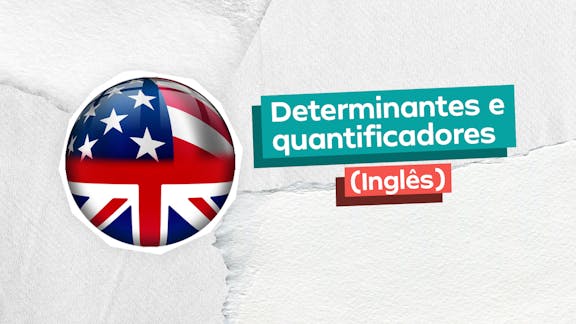According to the text
According to the text
Text 1
Toms Shoes make it a Christmas to
remember in Argentina
The ethical fashion brand, founded four years ago by L.A
entrepreneur, Blake Mycoskie, 34 has just given away its
millionth pair of shoes in a bid to make a difference to the
lives of poverty stricken children around the world.
Toms Shoes is based on a simple philosophy, for every pair
of shoes it sells on the high street, it gives away a pair to a
child in need.
‘When I arrived in Buenos Aires four years ago, I was
shocked by the level of poverty I saw and the number of
children running around barefoot. I wanted to do something
to help,” says Blake. “Four years on we sell our shoes all
over America and Europe and distribute free shoes to kids
everywhere from South America and Haiti to Ethiopia.
Coming back to Argentina was really special.’
Argentina may conjure up romantic images of tango clubs
and polo matches but over a quarter of the population live in
poverty here with a shocking one in ten surviving on less
than a dollar a day.
Typically a child might share one pair of shoes with several
siblings meaning their tiny feet are usually calloused and
rough by the tender age of five or their toes twisted and bent
from wearing ill-fitting shoes.
Toms Shoes has now become something of a movement
rather than a business and with a host of designers on
board the brand has acquired an array of celebrity fans from
Demi Moore to Keira Knightly. Even Bill Clinton has a pair.
Adaptado de:
http://www.marieclaire.co.uk/news/lifestyle/504822/toms-shoesmake-it-a-christmas-to-remember-in-argentina.html (7/11/2010)
Answer the follow question based on Text 1.
Text 1
Toms Shoes make it a Christmas to
remember in Argentina
The ethical fashion brand, founded four years ago by L.A entrepreneur, Blake Mycoskie, 34 has just given away its millionth pair of shoes in a bid to make a difference to the lives of poverty stricken children around the world.
Toms Shoes is based on a simple philosophy, for every pair of shoes it sells on the high street, it gives away a pair to a child in need.
‘When I arrived in Buenos Aires four years ago, I was shocked by the level of poverty I saw and the number of children running around barefoot. I wanted to do something to help,” says Blake. “Four years on we sell our shoes all over America and Europe and distribute free shoes to kids everywhere from South America and Haiti to Ethiopia. Coming back to Argentina was really special.’ Argentina may conjure up romantic images of tango clubs and polo matches but over a quarter of the population live in poverty here with a shocking one in ten surviving on less than a dollar a day.
Typically a child might share one pair of shoes with several siblings meaning their tiny feet are usually calloused and rough by the tender age of five or their toes twisted and bent from wearing ill-fitting shoes.
Toms Shoes has now become something of a movement rather than a business and with a host of designers on board the brand has acquired an array of celebrity fans from Demi Moore to Keira Knightly. Even Bill Clinton has a pair.
Adaptado de:
http://www.marieclaire.co.uk/news/lifestyle/504822/toms-shoesmake-it-a-christmas-to-remember-in-argentina.html (7/11/2010)
Answer the follow question based on Text 1.
Gabarito comentado
Alternativa correta: B
Tema central: interpretação de texto — identificar informação explícita no trecho. A questão exige reconhecer quem, segundo o texto, possui um par de Toms. Para isso é preciso localizar frases-chave e entender expressões como “from X to Y” e “Even ... has a pair”.
Resumo teórico rápido: - Informações explícitas: são as que o texto afirma diretamente; não dependem de suposições. - Estratégia principal: scan (varredura) por palavras-chave (nomes, verbos como has/have, advérbios como even). Fontes úteis: materiais de Reading Skills (Cambridge/IELTS) e descritores do CEFR sobre compreensão de textos.
Justificativa da alternativa B: No trecho citado, o autor diz que a marca “has acquired an array of celebrity fans from Demi Moore to Keira Knightly. Even Bill Clinton has a pair.” A expressão “from Demi Moore to Keira Knightly” indica que Demi Moore e Keira Knightly fazem parte do grupo de fãs (logo, têm os sapatos) e a frase seguinte afirma explicitamente que Bill Clinton também tem um par. Portanto, as três pessoas mencionadas possuem um par de Toms — exatamente o que a alternativa B afirma.
Análise das alternativas incorretas:
A — Erra porque diz que Bill Clinton não tem um par. O texto afirma explicitamente que “Even Bill Clinton has a pair.”
C — Erra porque nega que Demi e Keira tenham pares, contradizendo “from Demi Moore to Keira Knightly” (que inclui ambas como fãs). Além disso, afirma que Bill Clinton tem — essa parte até seria correta, mas as duas primeiras são falsas.
D — Erra ao afirmar que Keira Knightly não tem um par. O trecho engloba Keira entre os fãs; portanto ela tem.
E — Erra ao negar que Demi Moore e Bill Clinton tenham pares; o texto coloca Demi entre os fãs e diz explicitamente que Bill Clinton tem um par.
Dicas práticas para concursos:
- Procure nomes e verbos próximos (ex.: “has a pair”); são indícios de afirmação direta. - Atenção a expressões de inclusão (from X to Y = inclui X e Y) e a palavras como “even” que reforçam informação. - Elimine alternativas que contrariem afirmações textuais explícitas antes de buscar inferências.
Gostou do comentário? Deixe sua avaliação aqui embaixo!






